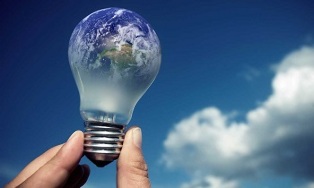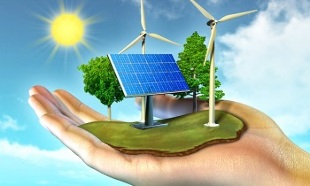
Today, in the modern world, energy saving is an integral part of the life of a civilized society. These are health care, money saving, and the comfort of living.
But one of the most important (global) energy saving features is environmental protection from negative influences.
Energy Saving Concept
The concept of "energy saving" has long been used. Currently energy saving is characterized by conceptual tools.
Energy saving based on energy sources as an energy carrier that can be used in any activity. Energy saving is an activity that aims to reduce the use of energy resources without compromising the main function of its use. Despite the extreme accuracy of the definition, confusion often occurs in the concepts of “energy saving” and “energy efficiency”. In this case, the latter definition is given. Energy efficiency is a set of specific characteristics that reflect the ratio of the effect of energy consumption to the cost of the energy source itself. Energy saving efficiency is characterized, among others, by the energy efficiency class, which reflects the level of use of a product in terms of energy saving. To determine energy efficiency, special energy surveys are conducted.
Basic principles of energy saving
Now, having determined the basic concepts in this field, it is important to note the basic principles of energy saving:

- Use of alternative energy sources.
- Use of secondary energy sources.
- Application of technology and equipment without energy intensive.
- Take steps to use available energy resources rationally. Assessment of economic qualifications using energy-saving technologies and solutions.
This list can be linked to the principles of energy saving rules and the main approach of insulation of private homes. The main thing to remember: energy saving not only involves additional methods of obtaining energy, but also activities to save available energy and rational use.
Alternative energy sources
Today there is a lot of discussion about alternative energy sources. As a rule, we mean renewable energy sources. What is constantly being renewed on planet Earth? Of course, this is water, sun, wind, earth's crust. Of course, if you look in detail, then solar activity also changes over time, and the surface of the earth’s crust becomes thinner, but all of this is on the scale of the Universe. We are talking about reform in the framework of our civilization - in the coming centuries, we believe, the Sun will not darken and the Earth will not fly out of its orbit.
Therefore, the following energy sources are considered as alternatives to oil, gas, coal and timber today:
- Solar Energy.Batteries and solar collectors are used to use these resources. The first is solar cells that directly convert solar energy into electric current. Solar collectors do not convert energy into electric current, but heat the refrigerant for subsequent use (e. g. , to heat water in private homes).
- Wind power.Electric wind turbines using blades rotated by wind force are very popular in Europe. For example, Germany already gets a third of its electricity using this renewable energy source.
- Water energy.This is not just about hydroelectric power plants. Today, there are heat pumps that convert water heat into lakes or ponds into stable water heating to heat a home and supply it with hot water.
- Earth Energy.The heat pump described above can also use heat from groundwater or the upper crust for public convenience. Such installations are very popular, as they do not require a source of water or wind nearby: refrigerators can be placed in special pipes under grass, for example, or in wells in garden areas.
Secondary energy source

Energy recycling is one of the basic principles of energy efficiency. Improving the efficiency of ventilation and air conditioning systems used in buildings is only possible by recycling exhaust air heat. The process of partial return of heat leaving the building (air heating in the room from work equipment, people in the room) is called restoration. In this aspect, energy saving is an energy saving activity in the room.
The principle of operation of the healer is very simple - through a certain platinum, which conducts heat well, the air coming out of the room heats up the cold flow coming out of the street, without mixing it. As a result, not ice, but 2-3 degrees of warm air enters the house, which contributes to a more comfortable microclimate in the room, and also allows you to save on heating, due to rising temperatures in the room due to warm flow. A recuperator is a type of plate, as described above, rotating (with a rotating element inside) and with an intermediate heat carrier. Many recuperator manufacturer options allow you to select devices for different premises and customers.
How to use communal energy resources rationally?
The rational use of available resources includes not only energy efficient installation and operation of equipment, but also compliance with certain regulations. Energy saving mode is a way of life where energy saving is provided at the household level. If you set a goal - to save on utility bills, then you must first install equipment that, with the help of supply automation and energy measurement, will allow you not to waste kilowatts. It should be selected based on the sign confirming that this device or devices provide energy savings. Improving the energy optimization of resource utilization is only possible with the rational operation of all equipment. Turning off light on time in an unoccupied room, pay close attention to wastage of hot water and proper arrangement of automatic metering devices and the use of heat and electricity in the home will make it possible to achieve significant results in saving energy and personal money.
What is a passive house?

Energy efficiency and energy saving are inseparable from the concept of passive housing construction. This combines a set of energy-saving measures, which together ensure low energy consumption. The history of passive home technology begins in the city of Darmstadt, where it was first developed by Feist physicists. The calculation of the energy balance of the house gives him the idea to make a building that does not need to be connected to heating even in winter - a passive house. At that time in Germany, homes used about 200 kWh / m² per year. Passive houses, on the other hand, only need 10 kWh / m² a year to stay fit and comfortable for life all year round. The basic criteria for a passive house are the manufacture of enclosed building envelopes with increased thermal insulation and low thermal conductivity. This is achieved by using energy-saving thermal insulation materials, excluding the so-called cold bridges (places inside the envelopes of buildings where cold penetrates into buildings: facades, window frames).
Energy efficiency technology application efficiency assessment
To bring the level of energy consumption in a building to passive home standards, it is necessary to use materials with high heat resistance, modern engineering equipment, renewable and secondary energy sources, in other words, measures that ensure energy saving. At the same time, energy efficiency is calculated based on the cost spent on a particular innovation in the home, and the impact of the decision that will be given to the owner. First, it is necessary to calculate the impact of new technologies on the production and use of certain types of resources. In this case, you need to evaluate:
- Level of resource savings (difference between resources used by energy efficient and traditional equipment for billing periods when generating the same amount of energy).
- Effect of energy production (difference or ratio of the amount of energy produced in a given period by the choice of equipment compared using the same amount of resources).
These indicators will give us an idea of the need to continue to calculate the economic impact. It is calculated by comparing the costs incurred to purchase new equipment (and possibly dismantling old equipment) and the income from energy saving when replacing waste machines with more modern ones (over a period of time). This difference will be an effect that will be received by the owner after a certain period of time after using an energy efficient solution. Usually the installation of recuperators or solar panels pays for itself in 3-5 years.
In conclusion, it should be noted that saving energy is not just to save money. First of all, this is a concern about tomorrow, where our children will live.
























